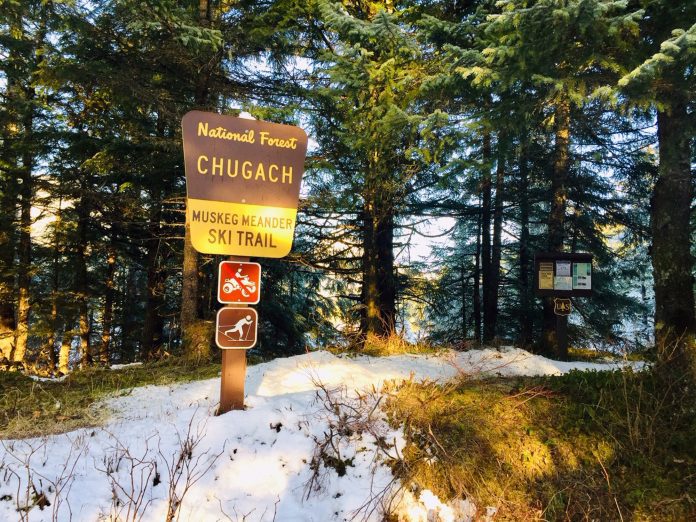By Raven Cunningham
Imagine a place where the mountains shoot up from the ocean, glaciers you can walk on that touch the ocean’s tides, and a place full of life from the sky to the rocks in the water. With over six million acres (about the size of New Jersey) of land and over 5,000 miles of coastline, this is Chugach, where over 1,500 Alutiit/Sugpiat and dAXunhyuu (Eyak) people call home. These Southcentral coastal people of Alaska make up the Tribes of the Chugach region of the Prince William Sound, Lower Copper River, and Lower Cook Inlet area. Historically, many villages were nestled in bays, beside lakes, and alongside rivers throughout the region.
Here is some historical information shared from the Chugach Prehistory by Fredrica de Leguna:
EYAK
The territory of the Eyak People (dAXunhyuu) is the mainland of Nelson Bay to Controller Bay, where there were approximately five main villages and several camps: AnAXAnAG (Alaganik), near mile 21 of the present-day Copper River Highway; iiyaaG (Eyak), near mile 5.5 of the present-day Copper River Highway; tsaalAxa’luw (Mountain Slough), 800 yards south of iiyaaG; aagah daad (Orca), near present-day Cordova toward Nelson Bay; xaxtl’i (Okalee), in Controller Bay. There is a story about when Raven created the land, he created Okalee Spit first. Today you can find a large rock on the spit that has indents that look like Raven had perched there. In addition to these villages there was an important fish camp near Point Whitshed that was shared with the Shallow Water People called digiLXah lAGd.
NUCHEK
The territory of the Nuchek people (nutyirmiut) is home to one of our oldest-known village sites. There were approximately six villages and camps on the western side of Hinchinbrook Island, including Cape Hinchinbrook to Anderson Bay.
SHALLOW WATER
The territory of the Shallow Water People (txalaymiut) is on the eastern half of Hinchinbrook Island to Mummy Island and includes Point Whitshed and Hawkins Island. There were several camp sites and a handful of villages throughout this area, but the main village was Palugvik, where the chief lived.
SHEEP BAY
The territory of the Sheep Bay People (alukaymiut or kaniymiut) was the smallest group claiming land between Sheep and Simpson Bay. There were approximately three villages/camps in the area. The beach northeast of Anderson Island was called uyumeqtuli, and it is where Raven first brought fire.
PORT GRAVINA
The territory of the Port Gravina People (atiaymiut) is the mainland between Gravina Point to Porcupine Point. The main village of this area was Olsen Bay, but there were a handful of other villages and camps scattered throughout.
TATITLEK
The territory of the Tatitlek People (tatilaymiut or Tatilaq) included all of Port Fidalgo northeast to present-day Valdez. There were at least 10 villages and camps throughout Fidalgo, the Islands of Boulder Bay, Tatitlek Narrows, Ellamar, Galena, and Bligh Island.
KINIKLIK
The territory of the Kiniklik People (kanixluymiut) contained the greatest number of glaciers to reach the tidewater. There were several villages and camps near Long Bay, Unakwik, Wells Bay, Kiniklik, Eaglek, Esther Passage, and Port Wells. It is said that pukituq, who turned into different animals, lived near Wells Bay.
CHENEGA
The territory of the Chenega People (taniymiut) was one of the largest groups claiming the western part of the Sound below Port Wells. There were villages and camps near Culross Island, Eshamy, Ewan, Jackpot Bay, Knight Island, Bainbridge Island, Evan Island, Elrington Island, and Latouche Island. Chenega Island was home to the main island, inimatia, “Under the Mountain.” It is said that Knight Island was shared hunting grounds.
MONTAGUE ISLAND
The territory of the Montague Island People (cuqluymiut) is the largest island in Prince William Sound. There were five villages and several camps. The people were known to be great sea otter hunters.
KENAI
The territory of the Kenai Peninsula People (unixkuymiut) was on the southern shores of the Kenai Peninsula. Historically, the inhabitants were not considered a part of the Chugach region until more recent years. These people extended across Puget Bay to Cook Inlet, including Kachemak Bay. There were villages near present-day Port Graham, English Bay, Koyoktolik (Dog Fish Bay), and the east coast near Kachemak Bay.
As time passed, the first communities have come together as seven distinct Tribes: Chenega, Eyak, Nanwalek, Port Graham, Qutekcak, Tatitlek, and Valdez. Two languages spoken here are Sugt’stun (Lower Cook Inlet and Prince William Sound dialects) and the reviving dAXunhyuuga’ language of Eyak. This area has been honored with many Alaska Native cultures. The Tlingit would sail north in cedar war canoes, the Eyaks floated south on the Copper River in cottonwood canoes, and the Sugpiat paddled in seal- and sea-lion-skin qayaqs from island to island in the Gulf of Alaska and Prince William
Sound. Occasionally, this area would also be visited by Ahtna and Dena’ina Athabaskans and Unangax. Our dAXunhyuu are the Wild Copper River Salmon People, the traditional stewards of the Copper River Delta region. dAXunhyuu means “throat of the lake, where the lake becomes the river.” We chose these sites because that is where the freshest wild salmon would be. Our Sugpiat Imam suga are the people of the sea: the traditional stewards of the Lower Cook Inlet and Prince William Sound. The identity of our people is established by the resources we use.
Raven Cunningham is the Tribal Fish & Wildlife Director for the Chugach Regional Resources Commission.
The Native Voices Column is a Cordova Times column that highlights and uplifts the experiences and culture of the many Native populations that make up our community through guest contributions to the paper. If you are interested in submitting something about your Tribe, Village or a Native topic that is important to you, you can email us at share@thecordovatimes.com. The Cordova Times covers and is distributed on the historical and unceded territories of the dAXunhyuu (Eyak people), the Prince William Sound Sugpiaq, and the Yaakwdáat Lingít.















